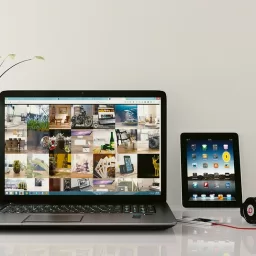Network Cables Used In Communication Systems

Fiber optic cable, twisted pair cable, and coaxial cable are the three main types of network cables used in communication systems.
Each of them is different and suitable for various applications.
Fiber Optic Cable
Fiber optic cable consists of a bundle of glass threads, each of which is capable of transmitting messages modulated onto light waves.
Fiber Optic cable has a complicated design and structure.
This type of cable has an outer optical casing that surrounds the light and traps it within a central core.
The inside of the cable (the core) must configured in two different ways – Single-mode and multi-mode;
although the difference may seem small, it makes a tremendous difference to the performance and the usage of fiber optic cables.
Network Cables Used In Communication Systems

Twisted Pair Cable
Twisted pair cable is a type of ordinary wiring which connects home and many business computers to the telephone company.
It is made by putting two separate insulated wires together in a twisted pattern and running them parallel to each other,
which helps to reduce crosstalk or electromagnetic induction between pairs of wires.
Twisted pair cable is suitable for transferring balanced differential signals.
The method of transmitting signals dates back to the early days of the telegraph and radio.
The advantages of improved signal-to-noise ratio, crosstalk,
and ground bounce that balanced signal transmission brings are particularly valuable in wide bandwidth and high fidelity systems.
According to whether the cable has a shielding layer,
there are two common types of twisted pair cables—shielded twisted pair (STP) cable and unshielded twisted pair (UTP) cable.
STP cable is available for Token Ring networks, while the UTP cable is more suitable for Ethernet networks.
The most common UTP cable types applied in Ethernet network are cat5e, cat6a, and cat7 cables, etc.
The following image shows the different structures of UTP and STP cables.

Coaxial Cable
Coaxial cable, or coax cable, is another type of copper cable which has an inner conductor surrounded by foam insulation,
symmetrically wrapped by a woven braided metal shield, then covered by in a plastic jacket (as shown in the following image).
This unique design allows coaxial cable runs to installed next to metal objects such as gutters without the power losses
that occur in other types of transmission lines.
The coaxial cable acts as a high-frequency transmission cable made up of a single solid copper core and compared to twisted pair cable.
It has 80 times or more transmission capability.
This kind of cable is mainly adopted in feedlines connecting radio transmitters and receivers with their antennas, computer network connections, and distributing cable television signals.

Conclusion
Choosing among coaxial cable, twisted pair cable, and fiber optic cable mainly depends on your needs and network topology.
You can balance the cost and the requirements of bandwidth to make a choice.
No matter coaxial cable, twisted pair cable, or fiber cable, suiting your network requirements is the best.
electric fuse
We are pleased to have you visit our pages on social networking sites,
where we publish exclusive offers on our website.
Our Facebook page here .
Our Twitter account is here .


